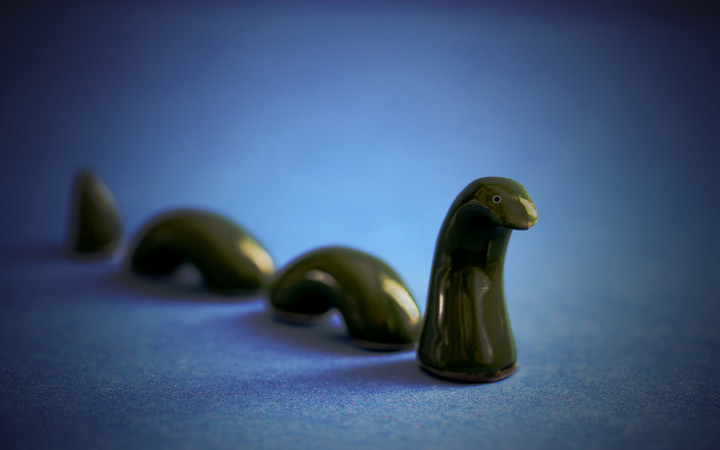Today’s Wonder of the Day was inspired by Adam. Adam Wonders, “Is the lochness monster real?” Thanks for WONDERing with us, Adam!
What do you picture when you think of Scotland? Bagpipes? Kilts? Perhaps lush, green, rolling hills? Some may think of a particular lake that’s rumored to hide a unique creature in its depths. What are we talking about? Loch Ness, of course!
Is Scotland’s Loch Ness (“loch” is the local word for “lake”) home to a large, strange aquatic beast? People who live near Loch Ness have lived with legends of such a creature for over 1,500 years now.
Located in the Scottish Highlands, Loch Ness boasts the largest volume of fresh water in Great Britain. It stretches over 23 miles in length and reaches depths of almost 800 feet in places. And the water in Loch Ness is known for being quite murky. Who knows what could be hiding beneath the surface?
Standing stones around Loch Ness bear carvings from the Picts. These were ancient tribes of people who lived there over 1,500 years ago. Scholars have identified all the animals depicted in the carvings except one: some sort of strange aquatic creature.
The biography of Saint Columba describes a similar animal. It claims that the saint prayed to save the life of a man being attacked by a sea monster in Loch Ness in 565 C.E. As the story goes, the monster relented and the man was saved.
The modern legend of the Loch Ness Monster, nicknamed Nessie by enthusiasts, got its start on May 2, 1933. That’s when a newspaper reported the claims of a local couple. They saw “an enormous animal rolling and plunging on the surface” of Loch Ness. From that point on, the Loch Ness Monster became the fascinating mythical sea creature it remains today.
But is it real? Hard evidence of any kind seems to be as rare as Nessie herself. Since 1933, the Loch Ness Monster has been the source of endless speculation and many scientific studies
To date, Nessie enthusiasts claim that there have been over 4,000 sightings of a strange aquatic creature. Some say it looks like a large dragon with flippers. This has led many to believe Nessie is perhaps the last of a species of marine reptile (such as a plesiosaur).
With so many eyewitness sightings, it seems odd that there are so few pictures of Nessie. The few famous photographs that have been thought to be of Nessie have all proved to be hoaxes.
Multiple scientific teams have used underwater photography and advanced SONAR systems to scan Loch Ness. No definitive proof of any kind has come from these investigations. But each one has resulted in detection of large objects moving underwater that could not be explained.
So if Nessie isn’t real, how can all of these eyewitness accounts and strange scientific findings be explained? Experts say there may be a variety of explanations. Perhaps optical illusions created by wind or boats cause people to think they’re seeing Nessie. It could also be explained by floating logs or animals. Maybe Nessie is actually a duck, otter, or swimming deer.
What do you think? Is Nessie real? Or is the Loch Ness Monster just another legend? Take a look at the evidence, then decide for yourself. Maybe you’ll be the one to solve the mystery of Loch Ness!
Standards: CCRA.L.3, CCRA.L.6, CCRA.R.1, CCRA.R.2, CCRA.R.4, CCRA.R.10, CCRA.SL.1, CCRA.SL.2, CCRA.W.2, CCRA.L.1, CCRA.L.2





